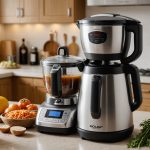Introduction to Seafood Safety in Restaurants
Ensuring seafood safety in restaurants is crucial to preserving customer health and maintaining a reputable business. When food establishments fail to adhere to proper seafood handling protocols, the risk of foodborne illnesses, such as those caused by bacteria like Vibrio and parasites, increases significantly. Proper training and awareness among restaurant staff are essential.
Regulatory guidelines provide a framework for safe seafood handling, from the moment the product enters the kitchen to its presentation on the plate. These guidelines include stringent rules on temperature control and storage conditions, such as keeping seafood below 5°C to prevent bacterial growth. Understanding these regulations is vital for all staff involved.
Also to discover : Crafting an Inviting Sensory Garden Dining Experience at Your Countryside Bistro: Key Design Elements Revealed
Furthermore, menu launch protocols should integrate seafood safety measures. Before a new seafood dish is added, critical evaluations must occur. This includes hazard analysis and training on specific seafood handling procedures to ensure consistency with established safety standards. A successful integration not only secures the well-being of diners but enhances the restaurant’s reputation, positioning it as a reliable establishment for seafood enthusiasts.
Consequently, investing in ongoing restaurant staff training and clear safety protocols is not just a regulatory necessity; it safeguards public health and fosters business success.
Have you seen this : Essential Guidelines for Safely Managing Raw Shellfish in Your Seafood Restaurant
Innovative Training Methods for Restaurant Staff
Exploring innovative training techniques is essential in ensuring seafood safety through effective staff engagement. One prominent method is experiential learning, which offers staff hands-on practice, allowing them to learn by doing. This approach helps employees better understand seafood safety protocols by simulating real-life scenarios. With hands-on practice, they can experience the immediate implications of handling seafood improperly, fostering a deeper awareness of safety measures.
The integration of technology into training strategies has proven effective. E-learning platforms provide flexibility and accessibility, offering training modules staff can complete at their own pace. These platforms often include interactive elements, such as quizzes and simulations, reinforcing learnt material.
Simulations play a vital role, allowing staff to practice procedures in a controlled setting. This not only builds confidence but also enhances their ability to respond to unexpected situations effectively. The use of augmented reality or virtual reality simulations provides immersive training experiences that replicate kitchen environments.
Staff engagement is critical for training success; hence, incorporating technology and experiential learning creates a dynamic and comprehensive training environment. By utilizing these strategies, restaurants can equip their teams with the skills needed to maintain high safety standards, ultimately protecting both the restaurant’s reputation and its clientele’s health.
Comprehensive Seafood Safety Protocols
Comprehensive seafood safety protocols form the cornerstone of reliable seafood handling procedures, ensuring both quality and safety. The effectiveness of these protocols begins with meticulous temperature control, as maintaining seafood below 5°C is crucial in preventing bacterial growth. Compliance demands constant monitoring using calibrated thermometers to ensure consistent designation in storage areas.
Equally important are the cleaning and sanitation practices customised for seafood preparation. This entails routine sanitisation of surfaces, utensils, and the seafood itself to minimise cross-contamination risks. By utilising appropriate cleaning agents, establishments can further ensure adherence to safety guidelines.
Ensuring compliance involves implementing stringent protocols that staff should follow rigorously. Each team member must understand the significance of these procedures, making regular training and refreshers imperative. Such comprehensive methods are paramount in meeting regulatory standards and protecting public health.
Furthermore, detailed protocols aid in preemptively identifying potential hazards, facilitating proactive measures. By integrating detailed compliance measures, restaurants can not only guarantee customer safety but also enhance their reputations as trustworthy seafood providers. Through diligent application and consistent reviews, establishments can sustain the high standards necessary for successful operations.
Risk Management Strategies in Seafood Handling
Effectively managing risks in seafood handling involves a robust approach to hazard analysis and continuous assessment. Identifying common risks is the first step in a comprehensive risk management strategy. These risks include bacterial contamination, improper storage temperatures, and potential cross-contamination. Implementing well-structured safety management plans, therefore, becomes essential in mitigating such risks.
The Hazard Analysis Critical Control Point (HACCP) principles provide a systematic method for identifying, evaluating, and controlling biological, chemical, and physical hazards from production to consumption. By applying HACCP, restaurants can establish critical control points specific to seafood handling and ensure compliance with safety standards. These critical points require regular monitoring to maintain effective safety measures.
A restaurant-specific risk management plan involves customising generic protocols to fit its unique operations. This plan should include risk assessment checklists, regular staff training, and emergency response strategies. Developing this tailored plan ensures that every aspect of seafood safety is addressed and continuously reviewed.
By prioritising these risk management strategies, restaurants can not only protect their clientele’s health but also enhance their reputation as safe and reliable seafood providers. Continuous evaluation and adaptation of these strategies will ensure enduring effectiveness and compliance.
Effective Communication Techniques for Staff Training
Effective communication skills are pivotal to enhancing seafood safety training. Building an environment of team collaboration ensures that all staff members have a clear understanding of safety protocols. It’s vital to foster open dialogue, where team members feel comfortable sharing insights and raising concerns about seafood handling practices.
To achieve this, creating regular forums or meetings can be beneficial. These events serve as platforms for staff members to engage in discussions about seafood safety, ensuring everyone is on the same page. Engaging staff in these conversations not only reinforces their training but also promotes a culture of safety awareness across the restaurant.
In addition, feedback loops are essential tools to improve training outcomes. They provide a mechanism for trainers to receive constructive input from staff on the training process and safety protocols. This feedback is invaluable for refining training methods and materials, helping to tailor these to the specific needs of the restaurant and its staff.
By utilizing these communication strategies, restaurants can ensure more effective training, resulting in better-prepared teams. This approach cultivates a culture of continuous improvement and safety consciousness, crucial for maintaining high standards in seafood handling practices.
Checklists and Resources for Seafood Safety
Ensuring seafood safety with practical tools is vital for any restaurant. Establishing comprehensive practical checklists assists in maintaining compliance with regulatory standards. These checklists form a reliable reference, detailing every required procedure—from receiving seafood to final serving. By following step-by-step tasks, staff can consistently execute proper handling and prevent food safety breaches.
Visual aids like posters in prep and storage areas serve as constant reminders of crucial protocols. Simple, eye-catching graphics can effectively communicate essential practices in maintaining seafood safety standards, such as proper temperature storage and cleaning routines. This continuous visual reinforcement aids in embedding safety procedures within the daily routine.
Additionally, providing access to supplementary training resources and reading materials can significantly enhance staff understanding of seafood safety. Online resources or printed guides offer in-depth insights into best practices and emerging trends, fostering a culture of continuous learning and improvement.
Ultimately, integrating these checklists, visual aids, and resources empowers restaurant teams to uphold high standards of seafood safety. With clear and accessible compliance tools, restaurants can safeguard their patrons’ health while bolstering their reputation as reliable seafood providers.
Case Studies of Successful Seafood Menu Launches
Exploring successful seafood menu launches provides valuable insights into implementing effective training and protocols in restaurants. Case studies reveal that strategic preparation, from menu conceptualization to execution, plays a critical role.
One success story highlights a restaurant that utilized hands-on staff training focusing on real-life seafood handling scenarios. This approach, combined with simulations, enhanced staff confidence and competence, leading to a smooth menu introduction.
In another instance, a restaurant leveraged technology by employing interactive e-learning modules for ongoing staff education. Integrating quizzes and certificates not only motivated employees but also ensured comprehensive understanding of seafood safety standards.
Key lessons from these case studies underscore the importance of detailed planning and robust training. Employing best practices like personalized staff training plans and maintaining open communication channels proves crucial. Regular feedback loops allowed teams to refine procedures before final menu launches, ensuring quality and safety from the outset.
By adopting these strategies, restaurants position themselves as credible establishments, gracefully navigating the complexities of seafood menu implementations. Ultimately, learning from these success stories can guide other businesses in embracing seafood safety with confidence and finesse.
Conclusion and Call to Action
Ensuring comprehensive menu safety is paramount in the bustling restaurant industry, where customer satisfaction and health are closely linked to effective seafood handling practices. Seafood safety training is vital and has a direct impact on the restaurant’s credibility and success. By prioritizing staff preparedness, restaurants can mitigate risks associated with improper seafood handling, thereby fostering a secure dining environment.
Additionally, encouraging a culture of continuous learning and improvement is crucial. This ensures that the restaurant staff remains updated on the best practices and emerging safety protocols. Regular refresher courses and training updates enable your team to adapt to any changes in seafood handling regulations or techniques.
Restaurant owners and managers should take actionable steps to integrate and prioritize seafood safety in their establishments. Start by assessing current training programs and identifying areas for enhancement. Partnering with experts to develop tailored training modules can also be beneficial. Moreover, engaging staff in ongoing learning journeys can boost morale and promote a culture of safety excellence.
Ultimately, a strategic focus on seafood safety not only protects customers but enhances the business’s reputation. Seize the opportunity to innovate and implement effective training protocols, ensuring long-term business success and reliability in seafood dining.




